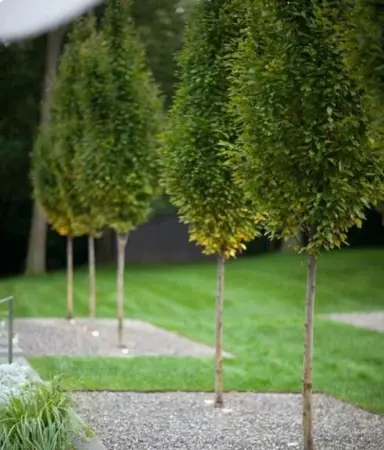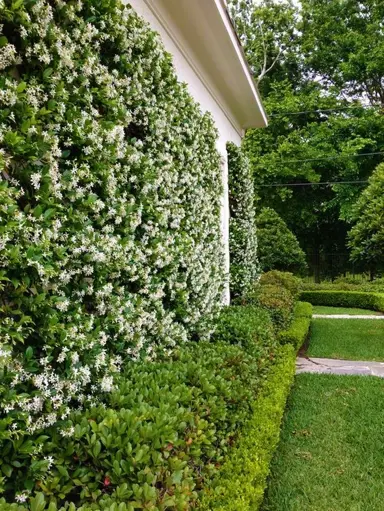
The Plant Company have the best Anthurium for sale, a fantastic range, and we can ship them to you fast! Browse our range of New Zealand-grown plants for sale and add some of our amazing gems to your garden.
Why? Our plants are in high demand due to our reputation for delivering high quality products at competitive prices. We may have these in production or be able to source these for you, so please feel free to contact us and our fantastic team will respond to your enquiry. Alternatively, we have a world class plant finder tool that you can use to help find alternative options.
Anthurium 'Baby Purple' is a captivating tropical plant admired for its deep purple spathes and glossy green leaves. This compact variety brings...
Anthurium 'Esudo' is a stunning tropical plant admired for its glossy, deep red blooms and rich green foliage. Perfect for New Zealand homes and...
Anthurium Giant Chocolate is a very popular indoor plant due to its lovely foliage and flowers. It features glossy, dark green leaves which serve as...
Anthurium 'Jambo Red' is a bold tropical plant loved for its rich red blooms and glossy, heart shaped foliage. Perfect for adding colour and elegance...
Anthurium Joli Blush is a very popular indoor plant due to its lovely foliage and flowers. It features glossy green leaves which serve as a stunning...
Anthurium 'Joli Peach' is a very popular indoor plant due to its lovely foliage and flowers. It features glossy green leaves which serve as a...
Anthurium 'Joli Pulse' is a stunning tropical plant admired for its soft pink blooms and lush, glossy foliage. Perfect for New Zealand homes and...
Anthurium 'Maine' is a stunning tropical plant that brings elegance and colour to any New Zealand home or garden. It features striking pink spathes...
Anthurium 'Mario' is a stunning tropical plant prized for its vibrant red blooms and glossy, heart shaped foliage. Perfect for New Zealand homes and...
Anthurium Red is a very popular indoor plant due to its lovely foliage and flowers. It features glossy green leaves which serve as a stunning...
Anthurium 'Red Winner' is a bold and vibrant tropical plant admired for its large, glossy red blooms and lush green foliage. Perfect for brightening...
Anthurium Success Red is a very popular indoor plant due to its lovely foliage and flowers. It features glossy green leaves which serve as a stunning...
Anthurium 'Utah' is a beautiful tropical plant admired for its large, glossy red flowers and lush green foliage. Perfect for adding colour and style...
Anthurium White Winner is a very popular indoor plant due to its lovely foliage and flowers. It features glossy green leaves which serve as a...
Anthurium 'Zizou Purple' is a striking tropical plant admired for its rich purple blooms and glossy, heart shaped leaves. Perfect for New Zealand...
Adding interesting plants such as Anthuriums to your garden or indoor space delivers a vast range of benefits:
We have the right Anthurium for your space, including Anthurium Flamingo, Anthurium hookeri, purple anthurium, pink anthurium, and more! We’ll help you chose the right plant to thrive. We stock only the highest quality plants, sourcing them from NZ’s leading nurseries. Each plant is packed and transported with extreme care, ensuring it arrives to you in the same condition it was in when it left the nursery. If you are wanting to buy Anthurium, shop with confidence from the best in the industry.
Anthuriums are a great choice for people who want a beautiful and colorful plant that is relatively easy to care for. They are native to the tropical rainforests of Central and South America, so they prefer warm, humid conditions. However, they can also tolerate normal household temperatures and humidity levels.
Anthuriums are known for their long-lasting flowers, which can continue for several months at a time. The flowers come in a wide variety of colors, including red, pink, white, orange, and yellow. They are also air-purifying plants, which means they can help to remove harmful toxins from the air.
Here are some of the benefits of buying an anthurium plant:
The price of an Anthurium plant can vary depending on the size, variety, and where you purchase it. However, in general, anthurium plants are relatively inexpensive. You can typically find small anthuriums for around $20, while larger anthuriums can cost up to $100 or more.
Here are some factors that can affect the price of an anthurium plant:
Growing anthuriums can be a rewarding experience, as these vibrant and exotic plants add a touch of tropical charm to any home. Follow these guidelines to cultivate healthy and flourishing plants in your garden or home:
Anthurium plants can produce stunning blooms for several months, adding a touch of elegance and tropical charm to your home or garden.
There are several factors that contribute to the high price of Queen Anthuriums (Anthurium warocqueanum):
In summary, the combination of rarity, high demand, propagation challenges, import costs, status symbol perception, cultivation requirements, and mature specimen value all contribute to the high price of Queen anthuriums.
Anthuriums are generally considered to be safe for bedrooms. They are not known to produce any toxins that could harm humans or pets. In fact, they are often recommended as air-purifying plants because they can help to remove harmful substances from the air, such as formaldehyde and benzene.
Anthurium andraeanum plants can live for 5 years or more indoors. They can continue to produce flowers year-round if provided with adequate light and moisture.
Here are some tips for extending the lifespan of your Anthurium andraeanum plant:
Anthurium plants are generally easy to care for, but they can still experience some common problems:
By providing your anthurium plant with the proper care and addressing any problems promptly, you can keep it healthy and happy for many years to come.
Fun fact: The heart-shaped spathe of the Anthurium flower is actually not a flower at all, but a modified leaf called a bract. The true flower is the tiny spadix that sits inside the spathe.
Anthuriums are considered a good choice for beginners. They are relatively low-maintenance and can tolerate less-than-ideal conditions. Here are some of the reasons why anthuriums are a good choice:
The frequency with which you water your anthurium depends on size of the plant, the pot it is in, the type of soil it is in, the amount of light it receives, and the humidity around it. Nonetheless, a general rule of thumb is that you should water your anthurium once a week during spring and summer, and every two weeks during autumn and winter..
Anthuriums are relatively easy-to-care-for plants that can thrive with minimal attention. They are adaptable to a range of conditions and can tolerate some neglect. Here are some tips for keeping your anthurium alive and thriving:
With proper care, your anthurium should thrive for many years.
Here's a summary of the potential downsides of keeping anthuriums:
Despite these potential drawbacks, anthuriums are considered relatively easy-to-care-for plants and can be rewarding to grow with proper attention.
The lifespan of a red anthurium, like other anthurium varieties, can range from 4 to 6 years with proper care. They can even live for 10 years or more if provided with optimal conditions. Regular watering, well-draining potting mix, and adequate light are crucial for extending the lifespan of your anthurium plant.
Epsom salt can be beneficial for anthurium plants as it provides them with magnesium, an essential nutrient for healthy growth and flowering. Magnesium plays a crucial role in chlorophyll production, photosynthesis, and protein synthesis, all of which are vital processes for plant health.
Bottom watering is a good option for Anthurium plants. Simply fill the tray the plant is sitting on with water and allow the plant to take up what it needs. Be sure not to leave the plant sitting in water as this can lead to root rot.
Anthurium plants, also known as flamingo flowers, are renowned for their vibrant, heart-shaped spathes and striking spadixes, the elongated flower spikes that emerge from the centre of the spathe. They are valued for their:
Whether you need assistance finding the plant you’re looking for or you simply want to know more about who we are and what we do, we invite you to get in touch with us today. A member of The Plant Company team will get back in touch as soon as possible.


